University of Lancaster
Type of resources
Topics
Keywords
Contact for the resource
Provided by
Years
Formats
Representation types
Update frequencies
-

Thermochronological data from IODP Bengal Fan site 354. Grant abstract: The Himalayas are a type example of continent-continent collision, and resultant mountain building processes. Geologists can look at the rocks in the mountain belt itself to determine its evolution, but sometimes the evidence in the rocks in the mountain belt itself is obscured by later increases in the temperature and pressure that the rocks were subjected to, which overprints the evidence. Sediments eroded off the evolving Himalaya are deposited in the Bengal Fan, and these can provide an archive of the erosion of the history of the mountain belt through time which has not been obscured my later metamorphism, as the material was eroded and removed from the mountain belt prior to these later overprinting events. This project will analyse minerals that cooled as they were exhumed from deoth towards the surface in the mountain belt. The project will date the minerals to determine the time they cooled, and this will provide information on when the rocks were exhumed and how fast they exhumed, thus providing information on when and how fast the mountain belt grew.
-

This data set contains a record of nitrate concentrations and isotopic composition present within the drip waters and speleothem carbonate deposits of Cueva-cubío del Llanío, northern Spain. Data were collected between 2018 to 2020, and specifically address the nitrate composition of the cave drip waters, pool waters, rocks, soil, vegetation and contemporary speleothem carbonate. Calculations are also undertaken to assess the partitioning of nitrate between cave drip water and speleothem carbonate deposits. Data pertaining to speleothem nitrate content also extend to other cave locations (Pooles cavern, UK; Brown's Folly Mine, UK, Ease Gill Caverns, UK; Rukiesa cave, Ethiopia; Cueva Perlas, N. Spain). Sample analysis was performed at Lancaster University and the UK Centre for Ecology and Hydrology under NERC facility access grant LSMSF\CEH\L\125\11\2018. The data presented represent the full underlying dataset to Wynn et al., 2021, Chemical Geology: DOI.org/10.1016/j.chemgeo.2021.120172.
-
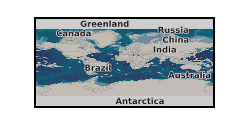
Rheometry data on ash from Mt Meager, British Columbia, Canada. All measurements that generated these data were performed using an Anton Paar MCR302 rotational rheometer with an Anton Paar powder flow cell attached. The rotating measuring geometry is 24.16 mm in diameter and contains 20 evenly spaced depressions of 1.75 mm that extend the entire length of the measuring cylinder. The profiled nature of this geometry prevents particle slip during rotation. Shear rate sweeps were performed to characterise the rheological behaviour of our pyroclast-gas mixtures. ~50 g of sample (ash from Mt Meager, British Columbia, Canada) was loaded into the powder flow cell with the measuring geometry inserted. Then for a constant gas flux applied to the base of the powder flow cell, the measuring geometry was rotated to apply a range of shear rates starting at 0.1 s-1 ramping up to 328 s-1 with approximately 20 data points generated per decade. These shear rate sweeps were performed for monodisperse grain sizes from 500 µm to 63 µm at a range of volumetric gas flow rates. Specifically for the 500 µm sample the rheology experiments were performed at 0, 15, 30, 45, 50, 55, 60, 65, and 70 L min-1. For the 250 µm sample the rheology experiments were performed at 0, 15, 20, 25, 30, 35, and 40 L min-1. For the 125 µm sample the rheology experiments were performed at 0, 1, 2, 3, 4, 5, 7, 8, 9, and 10 L min-1. For the 63 µm sample the rheology experiments were performed at 0, 0.25, 0.5, 1, 1.5, 2, 3, 4, and 5 L min-1.
-
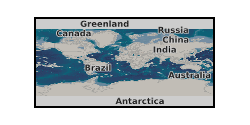
Organic and inorganic data extracted from core material spanning over a large area of the Baltic basin (Kostovo-13, Grotlingbo-1, File Haidar-1, Boda Hamn-1, Hamnudden-1, Finngrundet-1, Barstad-2 and Bernstorp-1). Organic data include concentrations in pristane, phytane, phenanthrene, methylphenanthrene and arylisoprenoids. Inorganic data include iron speciation data, concentrations in Fe, Al, P, U, Mo, V, total organic C, and C isotope ratios.
-
Noble gas and clumped methane data for samples from Anyue gas field, China (NERC Grant NE/T004452/1)
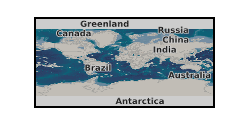
This dataset contains 6 tables covering all analytical data for samples collected from the Anyue gas field, central Sichuan Basin, China. Table 1 includes major gas species and stable carbon and hydrogen isotopes. Table 2 includes results for methane clumped isotopes and calculated methane formation temperatures of gas samples. Table 3 includes noble gas concentrations. Table 4 includes noble gas isotopic ratios. Table 5 includes parameters used in methane emission model and calculating total volume of methane emission. Table 6 includes gas composition and stable carbon and hydrogen isotope characteristics of major gases produced in the pyrolysis experiments (thermally equilibrated methane between 400~500 in theory) and working reference gas, and their methane clumped isotope values.
-
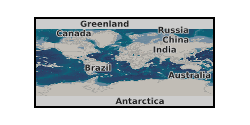
Table containing Fe speciation data, C isotope data, Total organic carbon contents, and Fe, Al, P, Mn and Sr elemental concentrations.
-
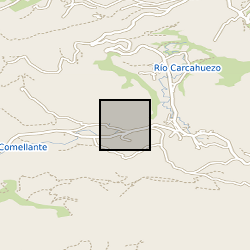
The following dataset provides climate and cave monitoring data from Cueva de Asiul northern Spain between 2010 and 2014. This data set was initially presented in Smith et al., (2016) Cave monitoring and the potential for palaeoclimate reconstruction from Cueva de Asiul, Cantabria (N. Spain). International Journal of Speleology, 45(1), 1-9. This data set represents the majority of cave monitoring undertaken at this site as part of a NERC funded PhD project (NERC studentship grant NE/I527953/1), data collection either occurred within this single cave site (43°19’0’’N, 3°35’28’’W) or within 1km of the cave in the village of Matienzo. The data set includes high resolution monitoring data for a range of climatic parameters including, cave and external temperature, rainfall direction, amount and oxygen isotope value, soil and cave air pCO2 concentration and carbon isotope value, cave drip rates and oxygen and deuterium isotope values. All data was collected using standard automated logging systems and the data/ samples were analysed either at Lancaster University, UK or at the NERC isotope geosciences laboratory, British Geological Survey, UK. Any missing data is a result of automated logger malfunction and is explained in full in the above cited paper. In combination this data offers a very high resolution, multiyear veiw into hydrological and cave ventilation processes, each of which play a major role in controlling speleothem growth and chemical makeup in Cueva de Asiul. The data set presents the pertinent background monitoring for the accurate interpretation of speleothems from this cave site. Those who may be interested in the data set include cave scientists who wish to implement a monitoring station/understand how climatic parameters influence speleothem development, or those who wish to obtain focused climate data from the Matienzo region between 2010 and 2014. The data set was collected by members of Lancaster University and the Matienzo caving expedition as part of NERC studentship grant NE/I527953/1. All cave monitoring was undertaken with kind permission from Gobierno de Cantabria, Cultura.
-
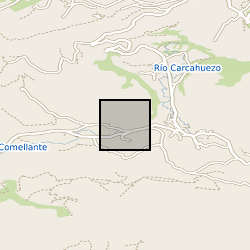
The data set provides climate and cave monitoring data from Cueva de Asiul, Cantabria, northern Spain. This data was initially presented in graphical form in Smith et al., (2015) - Drip water Electrical Conductivity as an indicator of cave ventilation at the event scale. Science of the Total Environment, 532, 517-527. All data was collected from within the cave or within a 1km radius of the cave site (43°19'0"N, 3°35'28"W) using instrumentation set up as part of a PhD project running between January 2010 and January 2014. The data set includes high resolution event based monitoring data for a range of climatic parameters - cave and external temperature, rainfall amount, soil pCO2 cave air pCO2 concentration, cave drip water calcium saturation, drip water electrical conductivity and cave air pressure. This data was analysed at Lancaster University, UK or at the NERC isotope geosciences laboratory, British Geological Survey, UK. Any missing data from this 4 year period is a result of instrument malfunction and is clearly explained within the above cited paper. The electrical conductivity component of the data set offers the first data set of this type form any cave system, using a submerged CTD Diver probe and novel piston flow housing. The rest of the data constitute a part of a larger cave monitoring data set produced during the project using a number of standard automated cave monitoring devices. When combined this data leads us to conclude that cave drip water electrical conductivity is driven primarily by changes in cave air pCO2 at Cueva de Asiul and therefore responds to cave ventilation dynamics, rather than by changes in karst water residence time. Without such extremely high resolution monitoring the impact of cave ventilation on event based changes in drip water electrical conductivity would not have been established for this site. This data set should be of interest to anyone studying similar cave sites, interested in the role of electrical conductivity as a monitoring tool within caves and cave ventilation on speleothem growth dynamics. The data set was collected by members of Lancaster University and the Matienzo caving expedition as part of NERC studentship grant NE/I527953/1. All cave monitoring was undertaken with kind permission from Gobierno de Cantabria, Cultura.
-
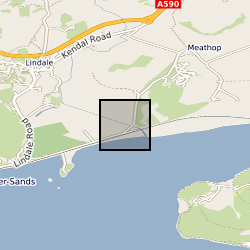
Thermal and Alternating Field demagnetisation data from Visean-carbonates from Meathop Quarry sampled in 2018. This covers the Martin Limestone Formation. MQ are sample codes sampled and data collection carried out by Tereza Kamenikova and Dr Mark Hounslow. The AF demagnetisation data flagged with a *G has a GRM correction applied along the lines described in Stephenson (1993). Data measured on a 2G instruments RAPID, with blank correction as in Hounslow(2019). File for of demagnetisaon data in in header and also described in the GM4Edit software (Hounslow et al. 2019). Sub-samples from main sample given codes like MQ2.1, MQ2.2 etc Hounslow, M.W. 2019. GM4Edit (v.5.6) - a windows program to manage, plot, export and manipulate palaeomagnetic magnetometer datasets. http://dx.doi.org/10.13140/RG.2.2.31877.91361/1.
-
The dataset comprises of plant species recorded from plots located within the Moor House National Nature Reserve, with associated plot information such as slope and aspect, also peat depth. The sampling strategy was based on a grid, using 2 x 2 metre square plots. The majority of the plots were recorded in the summers of 2008 and 2009 by surveyors employed by the Centre for Ecology & Hydrology. Full details about this dataset can be found at https://doi.org/10.5285/7a7d08e3-48e2-4aad-855b-9d6767b9ae9b
 NERC Data Catalogue Service
NERC Data Catalogue Service